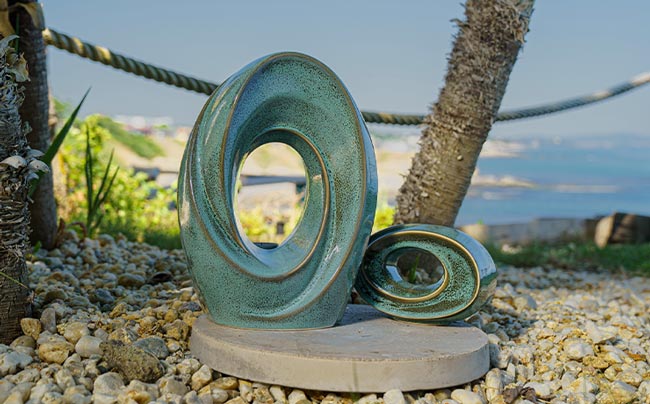
Why are Green Cremations so Taboo?
It is becoming increasingly difficult to ignore the impact that human livelihoods have on our planet. A lot of people are taking action to help reduce the ramifications of their choices and the damage they have on the world we live in. For example, more and more people are adopting a vegan lifestyle to reduce agricultural greenhouse gas emission, there are more plastic-free shops cropping up around the world, as individuals are reducing the amount of plastic waste they create.
You’ve probably never thought about the fact that the process of cremation has a green option to it. Although it might seem like such a small change to make, the additive effects of ‘every little helps’ will go a long way.
What is a Green Cremation?
Also known as resomation, bio cremation, aquamation, flameless cremation. However, the technical term for it is alkaline hydrolysis. The process mimics that of natural decomposition which could occur if the body were to be buried underground for 12 years, however with alkaline hydrolysis the process only takes around 2 hours by using a solution of 95% water and 5% alkaline component.
The same mechanisms of heat and pressure of flame cremations are used in the process but just without the fire. Therefore, bio cremation uses approximately 1/12th of the energy that is used for a typical fire cremation, as flame cremation requires around 1000℃ compared to the 150℃ used for water cremation. Furthermore, 1/10th of the carbon footprint produced from traditional cremation is produced from water cremation.
A flame based cremation causes lots of pollution due to the amount of carbon emissions which are produced as a result of the process. The water ‘pollution’ that is produced from bio cremation is sterile and safely disposed of within the sewage system. Potassium hydroxide is a substance that is generally found in every home in liquid soap. Ultimately, the resulting fluid is clean and composed of natural proteins that make up the human body so the family can decide if they want to place that somewhere like you would place ashes.
This often gives people the feeling that you're 'throwing a loved one down the drain'.
But, it does not have to be thought of in this way. Especially considering you receive 30% more ashes from a bio cremation than a flame cremation as the heat and fire disintegrates small bones in the human body, but water cremation preserves these, creating more ash. This is definitely beneficial if you have a large family you are wanting to share ashes with, such as in the form of a keepsake urn. Or, if you are wanting to take your loved one around the world, there are more ashes to spread.
Interestingly, the remaining fluids which are disposed of are pretty similar to the ones during the embalming process. Those are leached into the ground releasing harmful toxins into the environment, however these are sterilised and disposed of so that no harm comes to the environment.
The intense heat of flame cremation destroys any implants and dissolves dental fillings which release mercury vapours as well, which can be harmful if inhaled. Alkaline hydrolysis prevents the degradation of any plastics and Teflon's used in prosthetics, which have the possibility to be recovered, refinished, reused, and replanted in the future. Not even pacemakers have to be removed before the process!
So, Why are Green Cremations so Taboo?
Like many misconceptions, the topic of green cremation has been widely misinterpreted by many Hollywood films and storylines. For example, the dramatized dangers of sharks in Jaws.
Whilst captivating, some TV depicts criminals using acid to make any evidence and trace of their crimes disappear. Good for cinematic purposes, bad for teaching science. Alkaline and acids are at opposite ends of the pH scale and, therefore, decompose bodies differently.
Furthermore, in 2011 the myth that the Sicilian mafia used acid to dispose of human remains had to be cleared up by researchers. Urban legends and cinematic creations like these give water cremations a sense of violence and crime.
However, some might contest that green cremations are in fact more dignifying than flame cremations. There is a sense of tranquillity using water as a way to send someone on their final journey, in opposition to fire.
Due to religion and individual beliefs, some will never be on board with alkaline hydrolysis. However, flame cremation was resisted by the Catholic Church for many years and it wasn’t until the 1960’s that they finally changed their views. Therefore, there is promise for the future that they may come around to the idea of water cremation.
Where did the Alkaline Hydrolysis process Originate?
Historically, alkaline hydrolysis originated in the 1880’s as a way of processing animal bodies and the disposal of bodies used for medical research. In the UK, the process was widely used during the 1980’s and 90’s during the BSE epidemic of mad cow disease. Many cows were disposed of this way due to the large volume and the lesser environmental impacts it would have. The process was also a guaranteed method of eliminating pathogens of the disease whereas flame cremation didn’t come with the same guarantee.
In 2009, a Scottish Biochemist named Sandy Sullivan developed the first alkaline hydrolysis chamber designed for humans, called the Resomator.
Alkaline hydrolysis has been used for pet cremations for many years, including the separate compartment elements which allows multiple pets to be cremated at the same time but with a guarantee of no mixing of the remains so you will only receive your pets ashes back.
How much does a green cremation cost?
In the US the process is rapidly taking off and slowly being legalised in more and more states which as of 2020 was 20 states. The cost of water cremation is roughly the same as the cost of flame cremation in these states and Canada and Mexico.
Although water cremation is not illegal in the UK, there are many ethical concerns that have been raised regarding the practice. It is legal if it follows the guidelines surrounding health, safety, and environmental regulation.
The word Resomation became a trademark from the company Resomation who provided alkaline hydrolysis cremation services. They originated in the US and attempted to storm the UK with their up-and-coming business in 2017, however, they were refused an effluent permit by Severn Trent Water due to health concerns that the ‘polluted’ water would enter water systems.
However, Resomation argued that there are no risks of contamination to water systems as there is no DNA in the liquid, only proteins and they pose no greater risk than any pollutants created from hospitals and funeral services.
As of yet, there are no companies that offer water cremation in Britain. The process needs very specific facilities to operate which would cost over £300,000 to install in the UK.
However, there is a company in Ireland that does provide alkaline hydrolysis services. In-fact it is Europe's first bio cremation. Elizabeth Oakes graduated from Cypress University with a bachelor's degree in mortuary science, the only individual in Ireland to have this degree. The degree covered all aspects of the funeral process, including embalming and restorative art. But, Oakes says aquamation is the most eco-friendly way to cremate a loved one so she wants to promote it in Europe as it is widely accepted in the United States already. In 2019, Oaks stated that she had plans for three different locations where she was working with the council to get things started, with multiple investors interested. As of 2021, Oakes seems to have shied away from social media and the company website still says 'Coming Soon'.
There is also talks of a new Resomation site to be built in Bradford to replace crematoriums that are due to shut down in the coming years as the existing equipment used is over 100 years old and not suitable for future use. Similarly, in early 2020, Yorkshire Water consented to bio cremation organisations as they would allow the liquid to be discharged into the sewage systems.




Leave a comment
This site is protected by hCaptcha and the hCaptcha Privacy Policy and Terms of Service apply.